The Rhythm of Tai Chi
My Role
VR Artist
Developer
VFX Artist
Animator
VR Artist
Developer
VFX Artist
Animator
Tools
Unreal
Oculus
Maya
Unreal
Oculus
Maya
Client
XW Studio
XW Studio
Duration
4 Months
4 Months
Overview
The Rhythm of Tai Chi seamlessly blends traditional Tai Chi with cutting-edge VR technology, making this ancient practice captivating and relevant to the younger generation again. This app utilizes real-time motion tracking and visualization feedback, enabling users to leave traces of Qi that affect dynamic environments during training. Practicing Tai Chi regularly can improve balance, strengthen muscles, and enhance overall well-being. Combining Tai Chi with VR, the project offers an engaging experience that promotes cultural appreciation and wellness.
![]()
![]()
![]()
![]()
![]()
![]()
![]()
Tai Chi, a traditional Chinese martial art with a profound cultural legacy, has recently gained traction among young people worldwide. According to CNN, millennials are increasingly interested in Tai Chi, recognizing its numerous benefits, such as stress relief and mental health improvement. However, many face challenges like finding professional instructors, understanding the cultural background, and connecting with Tai Chi communities. The National Center for Complementary and Integrative Health highlights Tai Chi's benefits, including improved balance, flexibility, muscle strength, and reduced stress.
The Rhythm of Tai Chi combines the ancient principles of Tai Chi with cutting-edge virtual reality technology, offering an immersive experience that promotes physical and mental well-being. This innovative app addresses modern health concerns like stress and hectic lifestyles by making regular practice convenient and accessible. With features like real-time motion tracking, visualization feedback, and dynamic environments, the platform ensures users can practice effectively and enjoyably in any safe space, bridging the gap between tradition and modernity.
![]()
Game Flow
![]()
![]()
![]()
![]()
![]()
![]()
Interactive Landscape
To give the player the feeling of really being in a snow mountain scene, I decided to create a feature that would leave tracks on the ground.
![]()
![]()
![]()
Character Design
To more emphasis the core of Taichi, which is following the nature, I decide to create a human model without race, gender, and even no face, and use different particles fit for different scenes to cover the body.
![]()
![]()
![]()
![]()
![]()
![]()
VFX
![]()
![]()
![]()
![]()
![]()
![]()
Motion Capture
![]()
![]()
![]()
Functionality Test
![]()
User Testing
In total, dozens of people have tested my experience game.
Positive:
· over 90% of participants indicated they had only heard of Tai Chi but had never tried it or understood it, and 70% of users who experienced The Rhythm of Tai Chi went on to search for more information about the practice afterwards.
· 90% of people gave feedback that they could better feel the flow of Qi in The Rhythm of Tai Chi;
· 95% enjoyed the beautiful and immersive environement;
· 90% of people said they have a desire to learn more about Taichi and look forward to the subsequent development of more content
· Many people also said they were willing to pay for the fully developed product
Negative:
· For users who have not experienced VR games before, it is easy to get dizzy. Changing the movement speed will help.
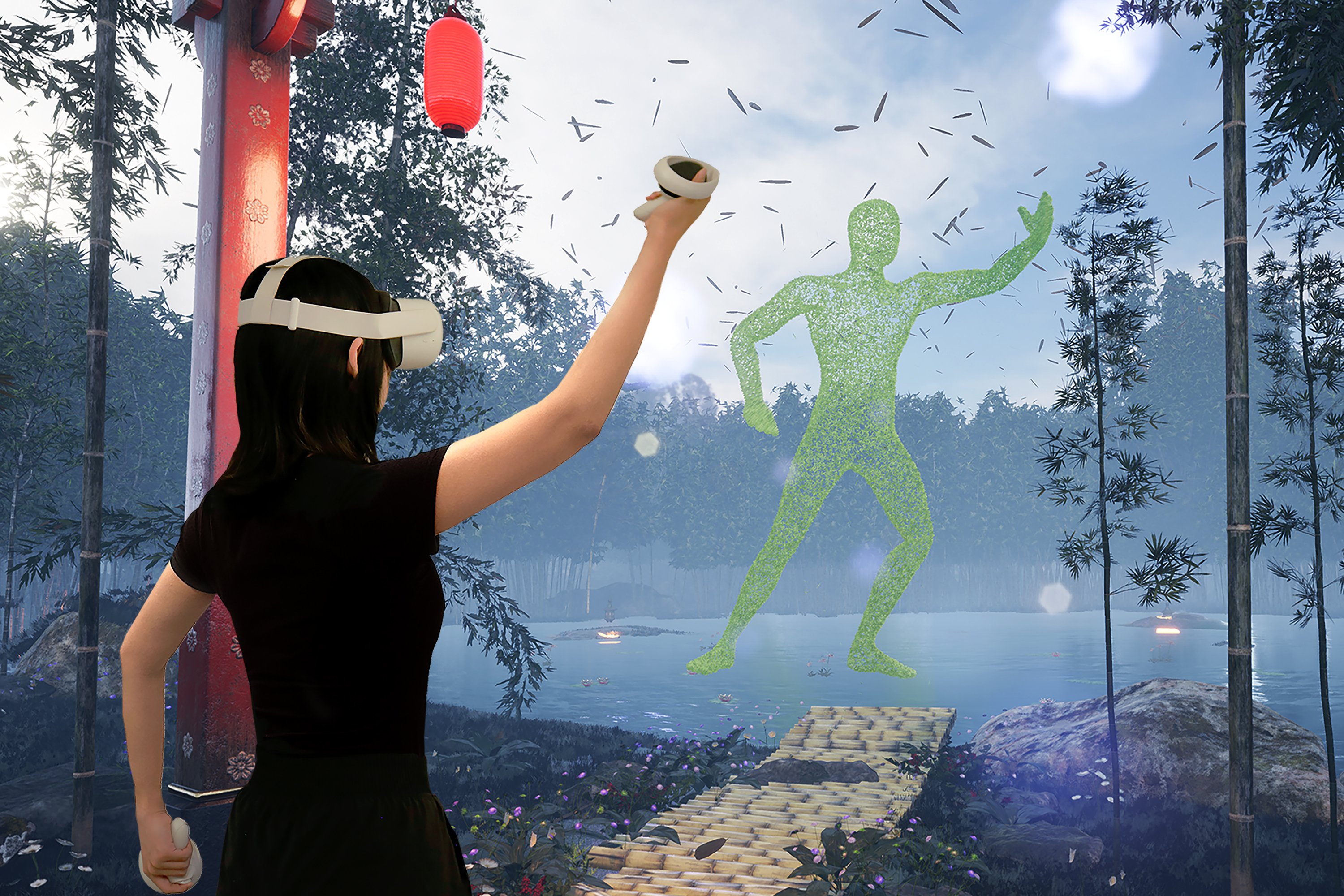
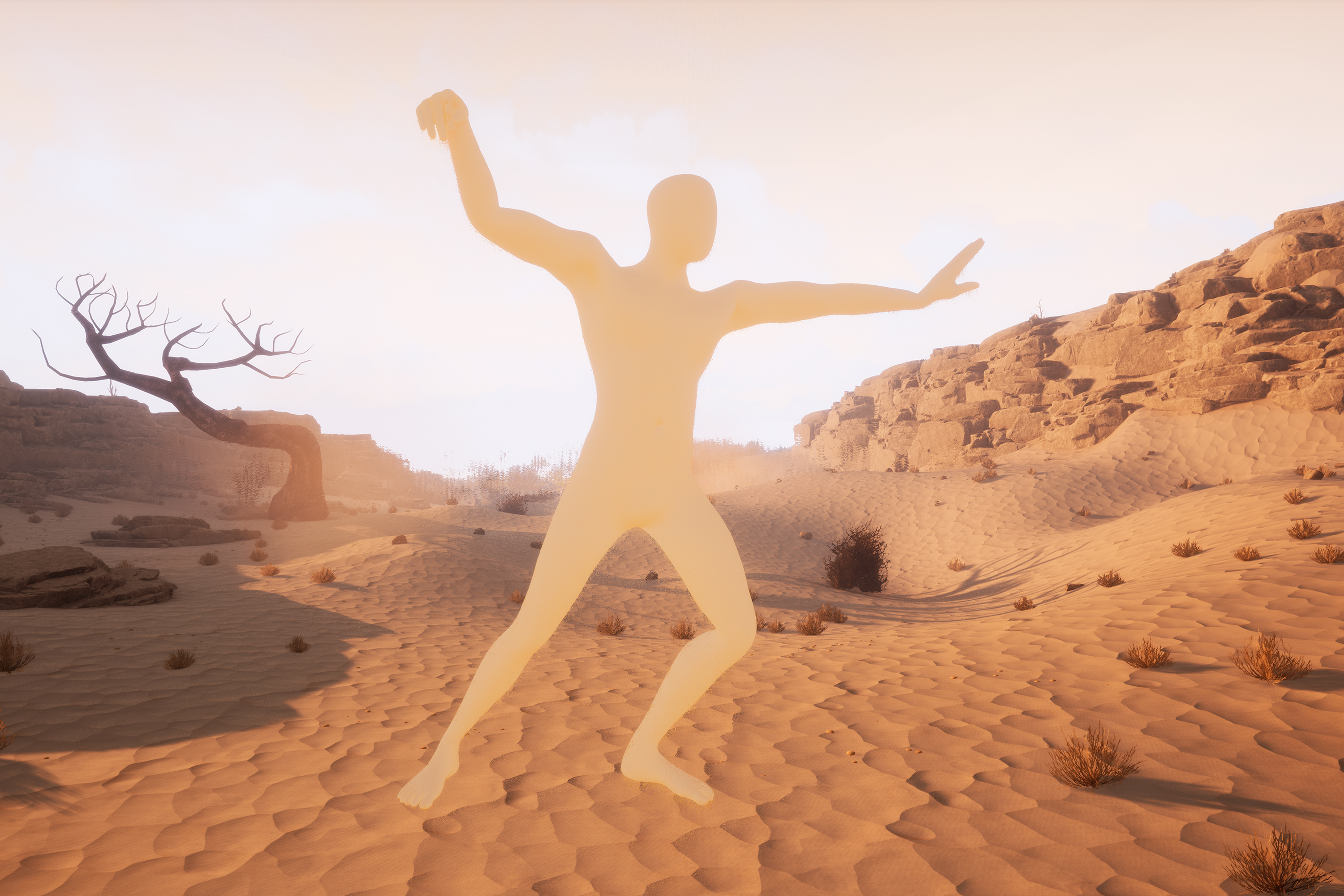


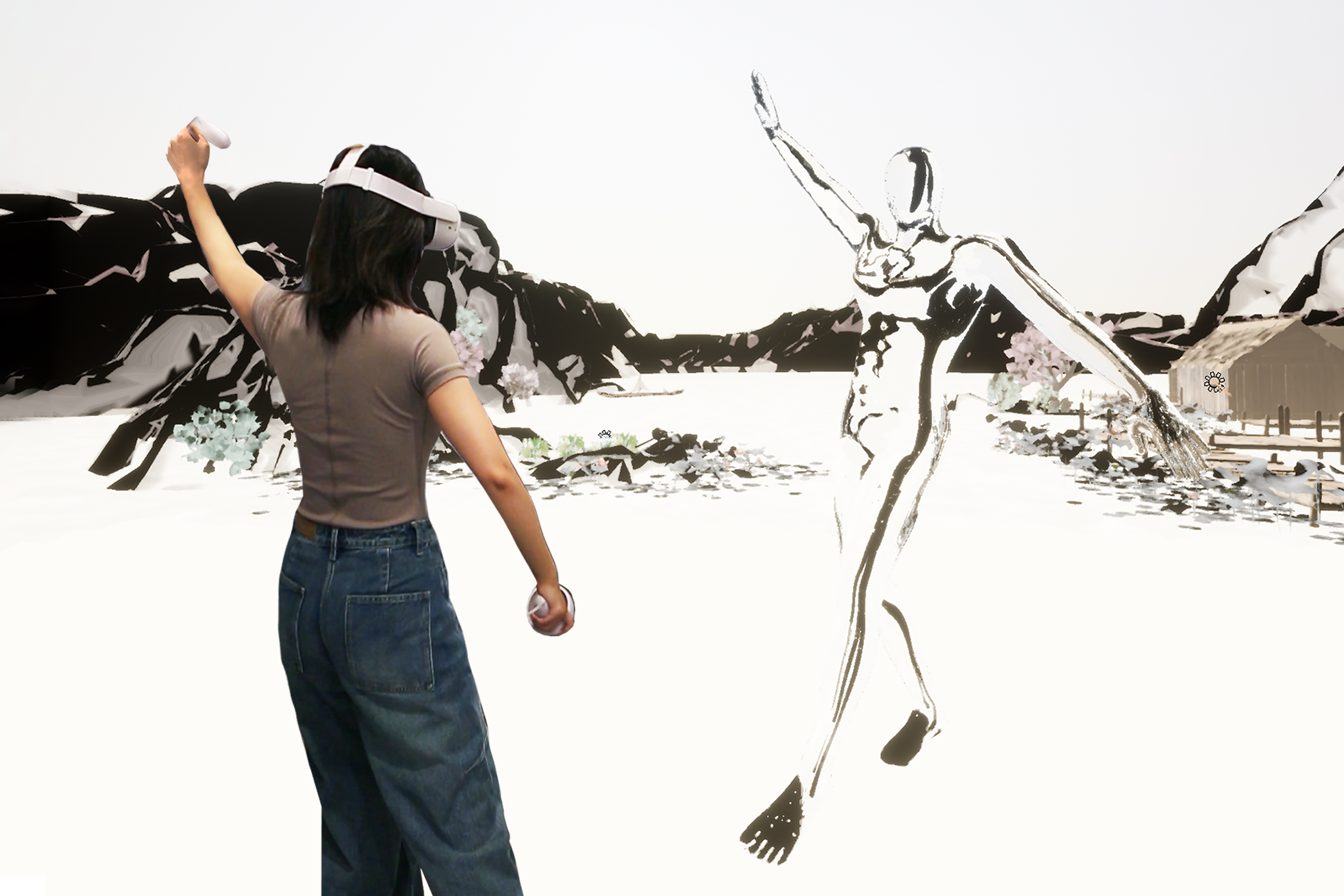

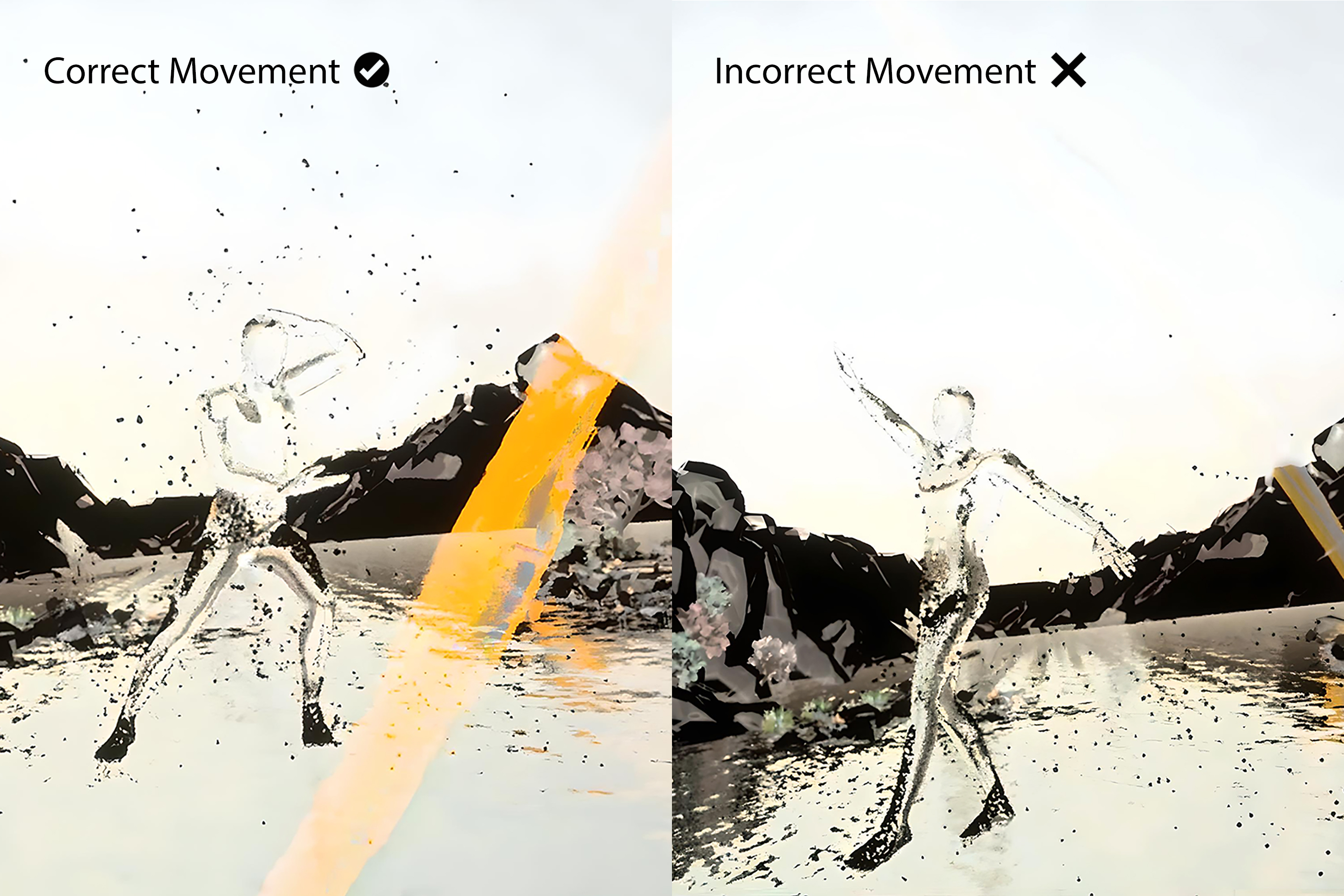
Background
Tai Chi, a traditional Chinese martial art with a profound cultural legacy, has recently gained traction among young people worldwide. According to CNN, millennials are increasingly interested in Tai Chi, recognizing its numerous benefits, such as stress relief and mental health improvement. However, many face challenges like finding professional instructors, understanding the cultural background, and connecting with Tai Chi communities. The National Center for Complementary and Integrative Health highlights Tai Chi's benefits, including improved balance, flexibility, muscle strength, and reduced stress.
The Rhythm of Tai Chi combines the ancient principles of Tai Chi with cutting-edge virtual reality technology, offering an immersive experience that promotes physical and mental well-being. This innovative app addresses modern health concerns like stress and hectic lifestyles by making regular practice convenient and accessible. With features like real-time motion tracking, visualization feedback, and dynamic environments, the platform ensures users can practice effectively and enjoyably in any safe space, bridging the gap between tradition and modernity.
Mind Map
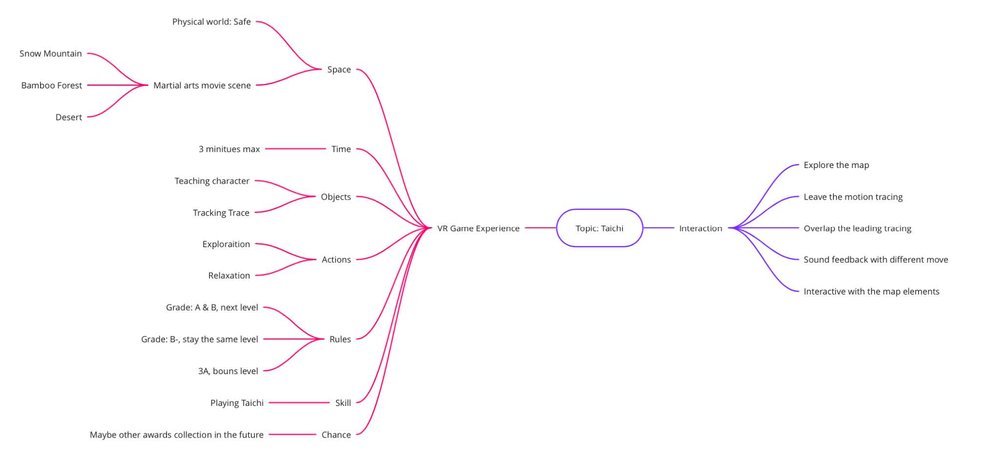
Game Flow

Mood Board





Working Process
Interactive Landscape
To give the player the feeling of really being in a snow mountain scene, I decided to create a feature that would leave tracks on the ground.



Character Design
To more emphasis the core of Taichi, which is following the nature, I decide to create a human model without race, gender, and even no face, and use different particles fit for different scenes to cover the body.






VFX






Motion Capture



Functionality Test

User Testing
In total, dozens of people have tested my experience game.
Positive:
· over 90% of participants indicated they had only heard of Tai Chi but had never tried it or understood it, and 70% of users who experienced The Rhythm of Tai Chi went on to search for more information about the practice afterwards.
· 90% of people gave feedback that they could better feel the flow of Qi in The Rhythm of Tai Chi;
· 95% enjoyed the beautiful and immersive environement;
· 90% of people said they have a desire to learn more about Taichi and look forward to the subsequent development of more content
· Many people also said they were willing to pay for the fully developed product
Negative:
· For users who have not experienced VR games before, it is easy to get dizzy. Changing the movement speed will help.